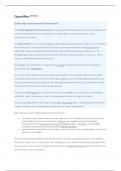Exam (elaborations)
ECS2601 Chapter Notes & Summaries
- Institution
- University Of South Africa (Unisa)
These are important revision notes to be studied in conjunction with the other study materials. Once understood your chances of passing this module is greatly enhanced.
[Show more]












